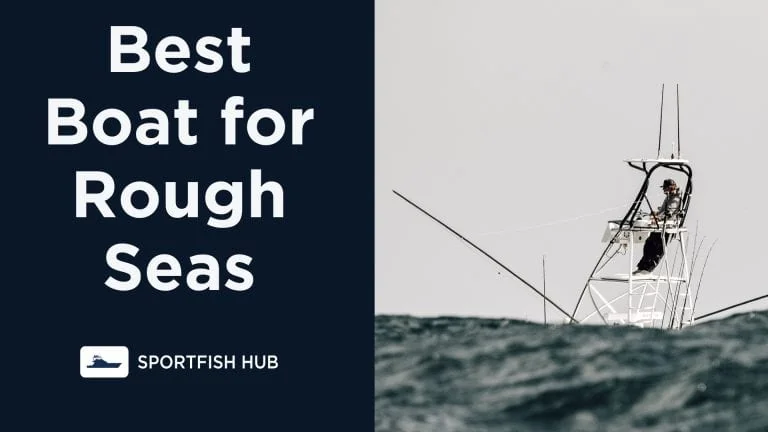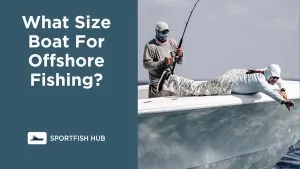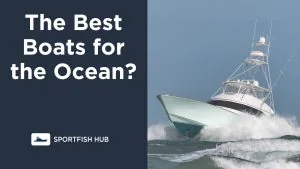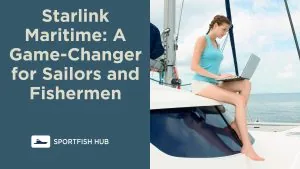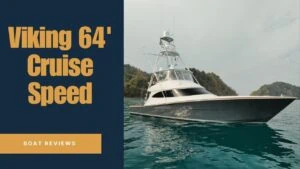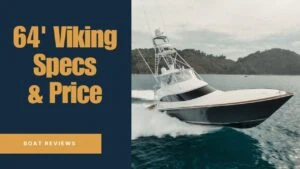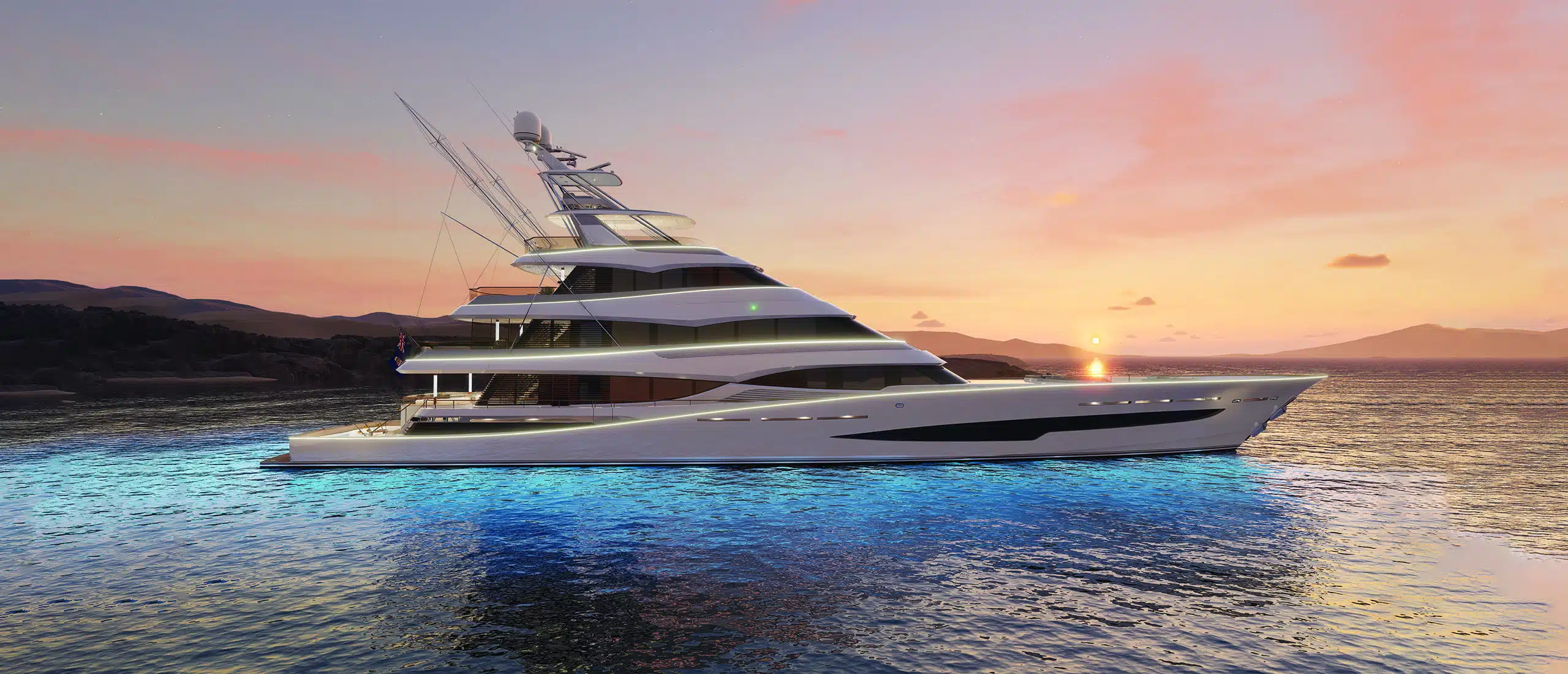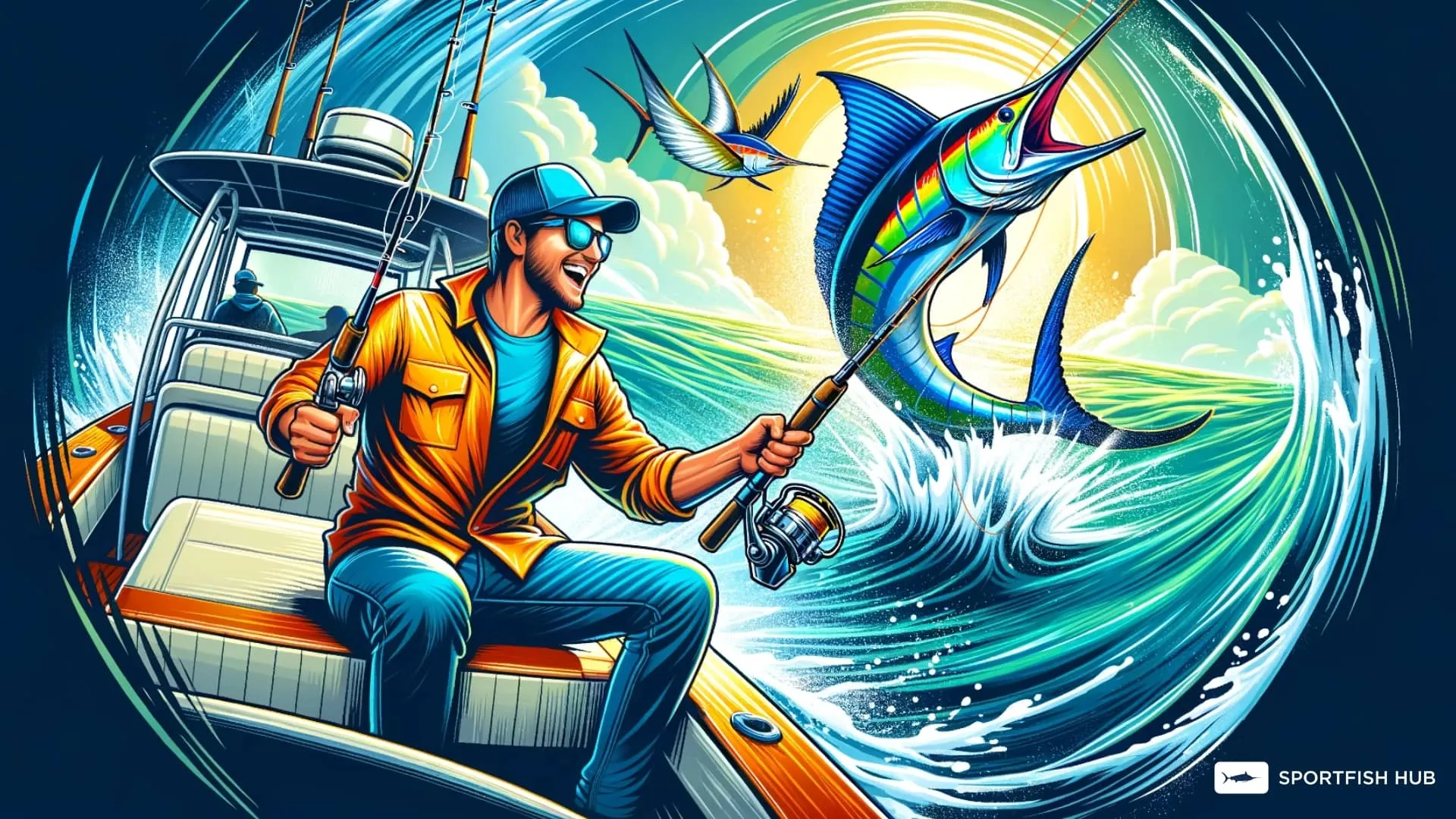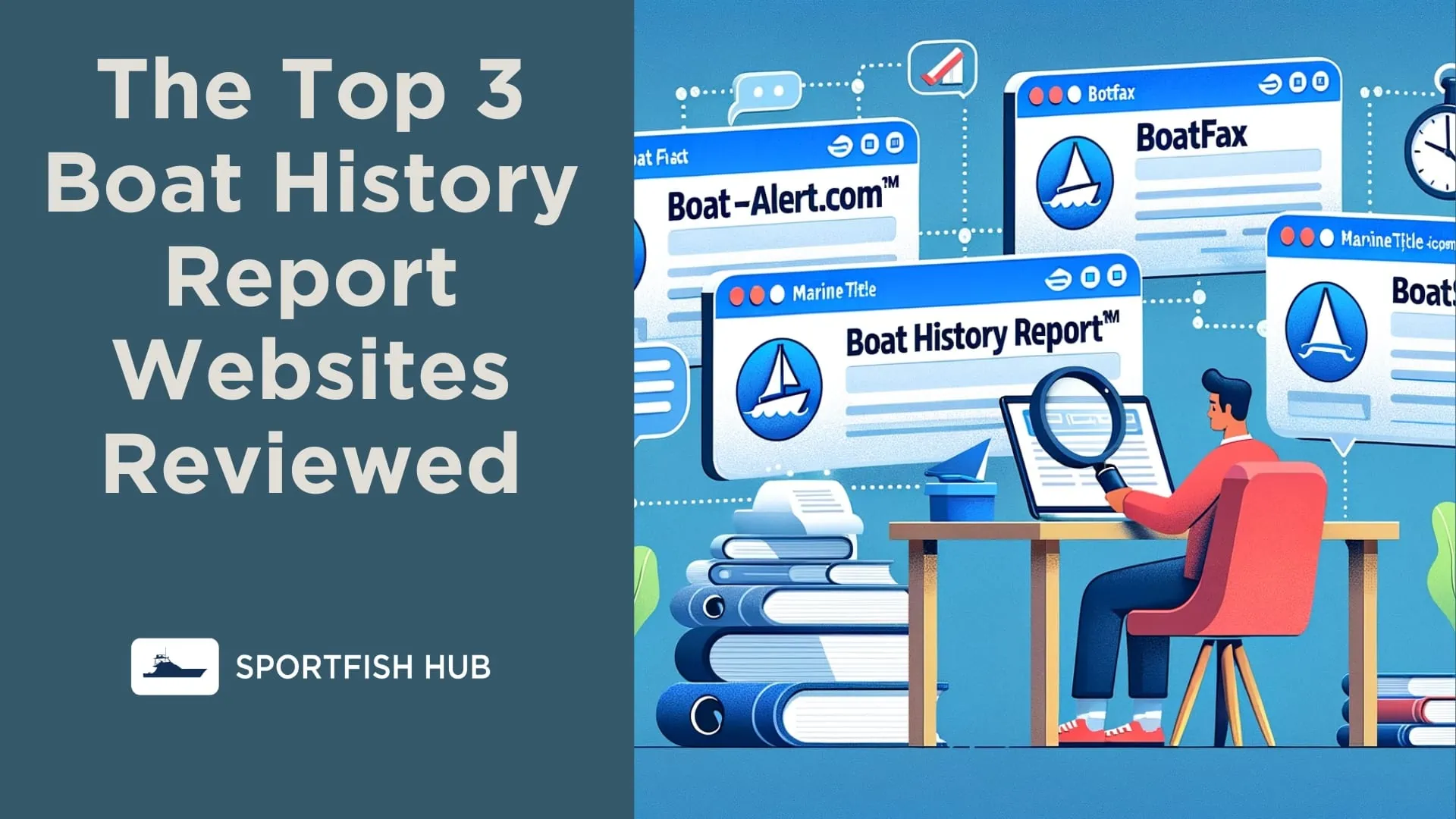For recreational boaters and potential boat buyers, finding the best boat for rough seas is crucial for a comfortable and safe experience on the water.
This comprehensive guide will discuss essential factors that affect a boat’s performance in rough water, explore various boat types and their suitability, and provide examples of good-riding boats.
You might also be interested in: The Best Boats For The Ocean.
Table of Contents
The Top Fishing Boat Brands For Rough Seas
Below we have compiled a list of the top 6 boat brands for rough seas. Most publishers choose their boats based on personal reviews, but we decided to scour the internet to try to find the most popular brands people are discussing and buying.
| Brand | Pros | Cons |
|---|---|---|
| Intrepid Powerboats | Advanced transverse stepped hull design for stability and a smooth, dry ride. | Limited to center console models. |
| Boston Whaler | Unsinkable hull design, versatile for various water conditions. | Can be more expensive than other brands. |
| Grady-White | Known for their SeaV2 hull design, which provides a smooth and stable ride. | Higher price point compared to some competitors. |
| Contender Boats | Designed for offshore fishing, known for their performance in rough seas. | Primarily focused on center console models, which may not suit all boaters. |
| EdgeWater Boats | Offers a variety of models for different fishing needs, including Heritage, Center Console, and Yacht models. | May not be as well-known as some other brands. |
| Twin Vee | Known for their catamaran-style hulls, which provide stability and a smooth ride in rough waters. | Limited to catamaran-style boats, which may not suit all boaters. |
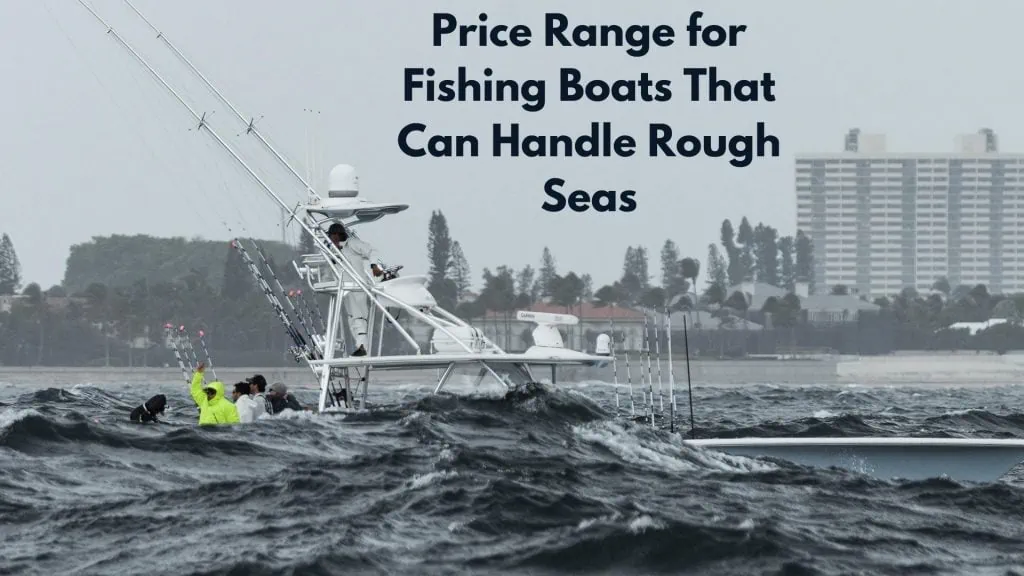
Price Range for Fishing Boats That Can Handle Rough Seas
The price range for fishing boats that can handle rough seas varies significantly depending on the size, brand, and features. To make it easier to understand, we can break down the price ranges based on boat size and type:
- Smaller Vessels (16-20 feet): These boats typically average between $30,000 and $60,000. They may offer less space and amenities but can still be effective in handling rough seas.
- Larger Offshore Boats: The price of these boats can exceed $100,000, offering more space, better performance, and additional features for serious offshore fishing adventures.
- Large Saltwater Fishing Boats: These boats can range from $30,000 to $300,000, depending on the size, brand, and features they offer.
- Small Fishing Boats (e.g., bass fishing boats): The prices for smaller fishing boats can start at less than $25,000 and go upwards of $75,000.
You might also be interested in reading our article: The best boat hulls and hull designs.
Displacement vs. Planing Boat Hulls
Understanding the differences between displacement and planing hulls is crucial when choosing a boat for rough water conditions.
Characteristics of Displacement and Planing Hulls
- Displacement Hulls: These hulls move through the water by displacing it, creating a wave pattern. They tend to be more fuel-efficient, but their hull speed limits their speed.
- Planing Hulls: These hulls ride on top of the water, reducing drag and allowing for higher speeds. They require more power and fuel to maintain their performance.
Pros and Cons for Rough Water Conditions
- Displacement Hulls: They typically provide a smoother ride in rough water due to their deeper draft and lower center of gravity. However, their lower speeds might limit their appeal for some boaters.
- Planing Hulls: These boats can handle rough water at higher speeds, but their shallower draft may result in a less comfortable ride.
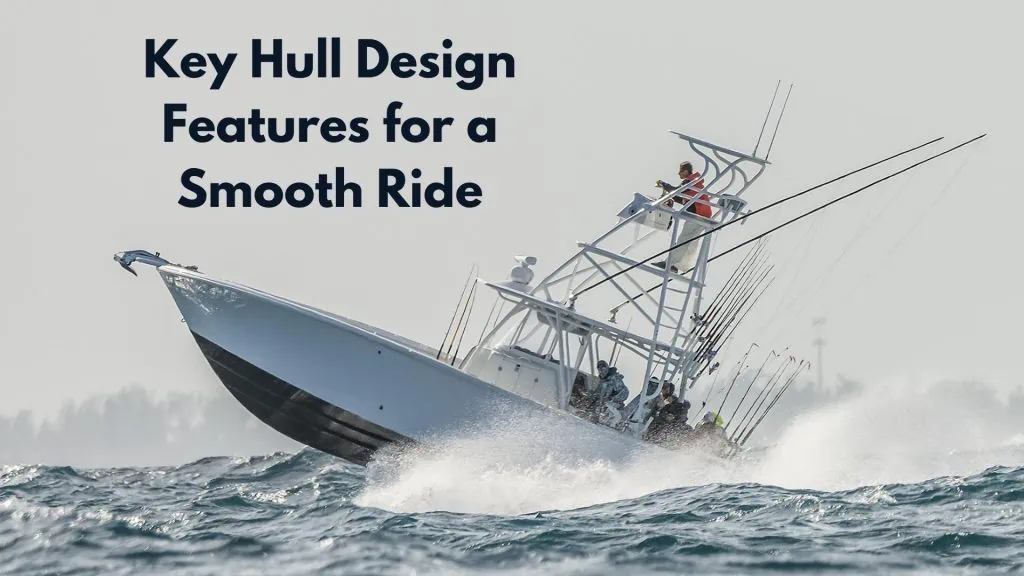
Key Hull Design Features for a Smooth Ride
Deadrise
Deadrise refers to the angle between the hull bottom and the horizontal plane. Higher deadrise angles result in a smoother ride in rough water, as the boat slices through waves more effectively. Optimal deadrise angles for rough water typically range between 20 and 24 degrees.
Length-to-Beam Ratio
The length-to-beam ratio is the ratio between a boat’s length and its maximum beam (width). A higher ratio generally results in a smoother ride in rough seas. Ideal ratios for rough water conditions are typically around 3:1.
Hull Shape and Following Seas
In following seas (waves coming from behind the boat), a well-designed hull is crucial to minimize bow-steering and broaching risks. A boat’s hull should have sufficient flare to lift the bow in following seas and chine flats to help direct water flow and maintain directional stability.
Boat Types and Their Suitability for Rough Water
Center Consoles
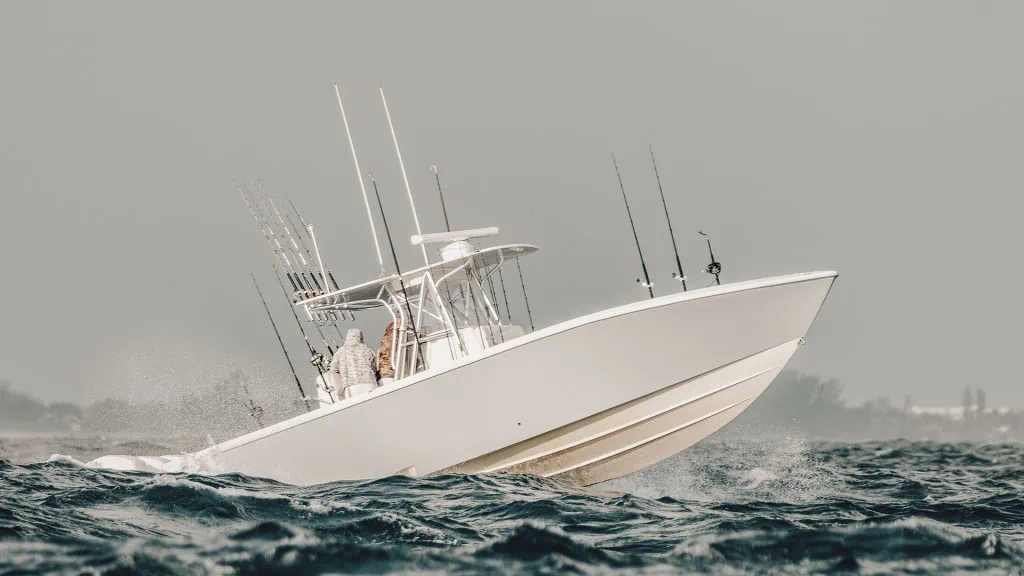
Center console boats offer an open deck layout, allowing for 360-degree access to the water. Their deep-V hulls and high deadrise angles make them suitable for rough water conditions. However, their open design might not provide as much protection from the elements as other boat types.
Cabin Cruisers
Cabin cruisers provide enclosed living spaces and amenities for extended stays on the water. They often feature deep-V hulls, offering a comfortable ride in rough seas. However, their higher profile can make them more susceptible to wind and waves.
Sportfishing Boats
Designed for offshore fishing, sportfishing boats often have large, deep-V hulls with high deadrise angles to handle rough water conditions. They provide ample space for fishing gear and often include accommodations for extended trips.
Trawlers
Trawlers are built for long-range cruising, featuring displacement hulls, deep drafts, and a low center of gravity. These characteristics make them well-suited for rough water conditions, but their slower speeds might be a drawback for some boaters.
Examples of Good-Riding Boats for Rough Water
Here are a few boat models and brands known for their performance in rough water:
- Boston Whaler 285 Conquest (center console)
- Grady-White Express 330 (cabin cruiser)
- Hatteras GT45X (sportfishing boat)
- Nordhavn 47 (trawler)
These examples are just a starting point, and there are many other boat models and brands on the market that perform well in rough water conditions. It’s essential to research and test different boats to determine which one best meets your specific needs and preferences.
You might find our article on the best boat brands very interesting.
Additional Factors for Comfort in Rough Water
Shock-Absorbing Seating
Investing in shock-absorbing seating can significantly improve comfort while riding in rough seas. These seats use suspension systems to minimize the impact of waves and vibrations, reducing fatigue and potential injuries.
Proper Boat Maintenance
Keeping your boat well-maintained is crucial for ensuring its performance and safety in rough water. Regular maintenance tasks include inspecting the hull for damage, checking the bilge pumps, and verifying that all navigation and safety equipment is in good working order.
Properly Loading and Distributing Weight
Properly loading and distributing weight on your boat can significantly affect its performance in rough seas. Heavier items should be placed low and centered in the boat, while lighter items can be stored higher. Ensuring even weight distribution helps maintain stability and improves the boat’s handling in rough water.
Key Takeaways
- Hull design plays a significant role in a boat’s performance and comfort in rough seas, with both displacement and planing hulls offering unique benefits and drawbacks.
- Deadrise, length-to-beam ratio, and hull shape are essential design features that impact a boat’s ride in rough water conditions.
- Different boat types (center consoles, cabin cruisers, sportfishing boats, trawlers) have varying suitability for rough water, so choose one based on your specific needs and preferences.
- Consider investing in shock-absorbing seating to minimize the impact of waves and vibrations, improving comfort during rough rides.
- Proper boat maintenance is crucial to ensure performance and safety in rough water conditions.
- Loading and distributing weight correctly on your boat can significantly affect its stability and handling in rough seas.
FAQ
-
How does the design of the boat’s deck affect its suitability for rough seas?
A well-designed deck should have non-slip surfaces, secure handholds, and a layout that allows for safe movement even in rough conditions.
-
What size waves can a boat handle?
Using a 30ft recreational fishing boat as an example, this type of boat could handle waves up to 30% of its length, 9ft high. However, this is just a general guideline because the length of swells is also an important factor.
-
Is a heavier boat better for rough water?
Yes, generally, boats with a little more weight tend to do better in rough water, although weight by itself is not a determining factor in the seaworthiness of a boat.
-
Which hull type would not be a good choice for rough water?
Flat Bottomed hulls would not be a good choice for rough waters.
Conclusion
Finding the best boat for rough seas involves considering various factors, such as hull design, boat type, and personal preferences. Displacement and planing hulls each have their pros and cons, and understanding key hull design features like deadrise, length-to-beam ratio, and hull shape is essential. Different boat types offer unique benefits and drawbacks, so it’s crucial to find one that aligns with your needs and preferences.
Remember, additional factors like shock-absorbing seating, proper boat maintenance, and weight distribution can further improve comfort and safety in rough water conditions. Ultimately, the perfect boat for rough seas depends on striking the right balance between comfort, functionality, and personal preferences.

